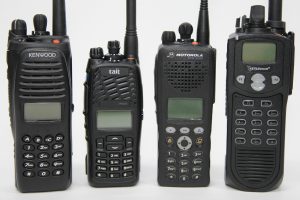
Different gadgets essential for your survival, such as flashlights and radios, run on batteries. Before SHTF, you need to stock up on batteries for these useful tools and devices.
Detailed below are tips on how to store batteries properly and their many survival uses. (h/t to ModernSurvivalOnline.com)
Before you stock up on batteries, you need to know more about different battery types, sizes and capabilities. It's also important to understand how to store them properly and how to recharge them.
With extra batteries in your stockpile, you can use survival gear like flashlights, headlamps, lanterns, some self-defense weapons and GPS systems. However, batteries require a significant industrial base to produce or charge, and you can't count on these two when things SHTF.
Classification of batteries
There are many kinds of batteries or cells, with two main types: Primary and secondary.
Primary batteries
Primary cells can produce current immediately upon assembly. Note that primary batteries are used until their electrical power is exhausted and they are disposed of.
Since the chemical reactions that supply power to primary batteries are not reversible, these batteries can't be recharged.
Primary batteries are also known as non-rechargeable batteries. These batteries are often used for portable devices that don't experience constant use and are low drain or other devices that don't suit alternative power sources since it's not practical.
Generally, primary batteries have higher energy densities than secondary batteries. Alkaline batteries are some of the most common disposable primary batteries that you can buy.
Secondary batteries
Secondary batteries can be recharged by applying electric current directly to the battery itself.
Most secondary batteries need a specific charging device for safe and proper charging. Secondary batteries are available in both small-scale or large-scale formats. The most common types are lead-acid batteries, often used to power vehicles. (Related: Prepper must-haves: What to stock up on before a summer or winter power outage.)

Common battery sizes and uses
Below is a list of standardized battery formats that are some of the most common primary and secondary types used in the U.S. and North America.
- AA – AA batteries have been around since 1907 and they are used in different kinds of household and consumer electronic devices like accent lighting, cordless phones, smaller flashlights, TV remotes and wall clocks,
- AAA – AAA batteries have been around since 1911 and they are often used to power compact radios, decorations, small personal electronics, small flashlights and walkie-talkies.
- AAAA – AAAA batteries are rarer and are often used in calculators, electronic styluses, illuminated fishing lures, laser pointers, pen-style flashlights, or inspection lights.
- C – C batteries are used in older flashlights, radios and work lights.
- CR123A – This is one of the most common lithium primary cells. It is often used for maximum energy density in high drain devices like cameras, UV water purifiers and tactical flashlights.
- D – D batteries were the original flashlight battery, and they were first introduced in 1898.
- E (9-volt) – E batteries are also known as smoke alarms or radio batteries.
- F – F batteries are rarely used as standalone primary batteries. They are usually integrated as a module and used as a common, rectangular lantern battery.
- Flat/thin – Flat, thin batteries that are typically lithium-ion secondary cells are used to power energy-hungry devices like laptops and smartphones. When damaged, these batteries may explode or pose as a fire hazard.
- Lantern –Lantern batteries are rectangular. They are available in a variety of formats with a variety of connections.
Proper storage of batteries
As a prepper, you may have a stockpile of different kinds of batteries. Make sure they last by storing them properly.
Stack and pack them correctly
Store batteries properly to prevent self-discharging and damage while in storage. Using damaged batteries can cause malfunctions in your survival or prepping equipment.
Keep batteries in factory packaging if you don't have a custom-made container that is the same size as the batteries. While all batteries have an insulated wrapper or outer container (like with battery modules or packs), don't let the electrode contact other batteries or any conductive surface.
Store batteries in a room temperature and away from direct sunlight.
Storing and handling lithium batteries
Don't keep any lithium battery or any device currently powered by lithium batteries in a high-temperature environment. High temperatures will increase the strain on the battery and the chances of thermal runaway.
Store lithium batteries in compartments, with spaces or breaks between them or leave spaces between each group of batteries. This will help reduce the risk of a chain reaction and the severity of a fire hazard if SHTF.
Lithium batteries are useful, but they must be handled with caution.

Batteries for your survival stockpile
When SHTF, batteries are a consumable or semi-consumable resource that will be in demand.
Consider these factors when choosing equipment that requires batteries:
Batteries can and will self-discharge
Even brand new batteries won't last forever in your stockpile. Eventually, they will slowly lose their charge, which is normal.
This process is called self-discharge and different batteries have a different self-discharge rate. When buying a battery with a high self-discharge rate and is also a cut-rate option with low energy density and low capacity, it will probably be "dead" within a couple of years.
When buying batteries for essential life support equipment or defensive tools, buy high-quality batteries with a great shelf life. Like food or other perishable supplies, you need to rotate your batteries.
What are you using batteries for?
Buy batteries that best meet the requirements of a device when it comes to the cell powering it. This helps ensure the optimum combination of longevity and performance.
Modern flashlights can run on different kinds of batteries, but only one of them will provide it with maximum brightness, full brightness over time and long run time. Using a different type of battery means you have to give up one or two of those features.
Use battery spacers
Sabots, also called battery spacers or battery adapters, are a useful prepping tool. With a sabot, you can use a different, smaller battery if you don't have the right size for your device.
Just insert the smaller battery into the battery spacer then place the spacer cell combo into the device like you would its usual battery.
Rechargeable batteries are a better option
Secondary cells or rechargeable batteries are a better investment compared to non-rechargeable primary cells.
However, secondary batteries require electricity before they can be charged, which can be an issue during a long-term power outage. If you're worried about this, you can generate and store large amounts of electricity by using a portable generator or a renewable energy source like solar panels.
Instead of considering this as additional work, consider the prep for charging reusable batteries as investing in correct rechargeable battery technology to save money before SHTF.
Batteries are useful for preppers with many devices. Invest in the right kinds of batteries to make the most of your preps.
Store batteries properly and rotate your supply to ensure that you have enough for your devices when SHTF.
Visit Preparedness.news for more articles about batteries and other items you need to stock up on before SHTF.
Sources include:
Please contact us for more information.




















